Chipping and painting are some of the simplest maintenance jobs on board any merchant vessel. I haven’t experienced a ship where this task was not on the menu during my decade of sailing.
Actually, I was for most of the time, sailing on tanker vessels. These types of vessels have high standards of safety due to the nature of their cargo.
A small misstep, wrong use of an electronic device, or doing shortcuts could blow the vessel to kingdom come.
Painting would not be a problem but chipping creates sparks. A spark is one of the things that tanker men are allergic to.
What is chipping and painting?
Chipping and painting are one of those jobs that go together in that order.
Since vessels are made of metal and sail on salty waters, they corrode into rust very quickly.
Untreated rust on board can easily spread and “eat away” your ship thereby threatening her structural integrity.
To avoid it from happening, seafarers conduct preventive maintenance on board in the form of chipping and painting.
These simple tasks extend the life of the vessels as well as save the shipowners from costly repairs.
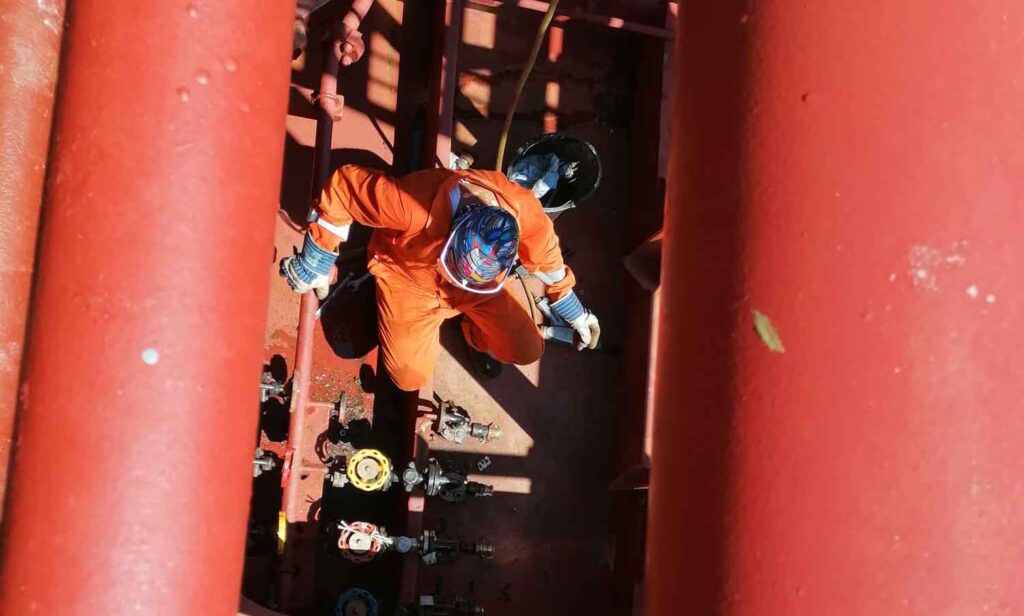
Chipping is the process of removing rust on deck, the ship’s side, inside tanks, machines, certain equipment, and basically most parts of the ship.
There are many chipping tools you can use to get rid of the corrosion. Since these are power tools, you also need to use appropriate PPE like gloves, goggles, ear muffs, coveralls, face masks, etc.
After chipping, the metal surface is “brushed” using a wire brush to remove the remaining dust or rust particles. Painting is applied last to protect the bare metal from rusting immediately.
Why do we chip and paint?
Chipping and painting a vessel serve several important purposes in marine maintenance. We need to do this for a number of reasons including:
1. Prevent corrosion – like what we discussed earlier, this preventive maintenance keeps the vessel shipshape. Rust can quickly weaken the structure of the ship. Chipping removes the rust and stops it from spreading further. Painting creates a protective barrier that prevents rust and deterioration.
2. Aesthetics and Cosmetics – I was once in an STS (ship-to-ship) banking with another tanker. Our vessel appears more brand new when in fact, it was five years older because rust and rust stains were visible on their deck and accommodation block.
3. Reduce drag – rust formation in the ship’s hull can create drag and slow down the ship especially if they are left untreated.
4. Comply with regulation – we once had a GL surveyor (Germanischer Lloyd, now DNV GL) board our ship for class inspection. It was a newly-bought ship and 47% of the deck was corroded. He wrote that in his report and the company sent 5 riding squads within a month.
5. Avoid accident or injury – our inspector was afraid of walking on the catwalk because he was afraid it might collapse due to extreme rust. When he commented that the vessel is like a “ghost ship”, you know that the corrosion there is spectacular!
6. Increase the vessel’s lifespan – if done correctly, the ship can be of service longer than usual.
How do chipping and painting pose risks?
Since these rusts are very persistent to remove, we use power tools to “beat them up” until they detach from the metal plate.
This is where the danger comes in.
The power tools hit, bang, and scrape these rust very strongly. This metal-to-metal activity creates sparks.
A tanker vessel itself is a floating bomb and the detonator is a small spark. Their cargoes are extremely flammable like gasoline and naphtha which are stored below deck.
These goods give off fumes that could ignite when a spark is introduced.
Even if the deck is an open area, there could be pockets and spots containing such vapors since they are heavier than air.
But how do seafarers chip and paint every day if these dangers are ever present on board?
Chipping and painting on tanker vessels
You can and can’t chip on the deck of tanker vessels under certain conditions.
Chipping doesn’t produce much heat, unlike welding and cutting. However, due to the impact of the power tools against rust and metal surfaces, it creates lots of sparks.
You can still conduct chipping maintenance on deck if your tanks are gas-free! A gas-free condition means your tank has 21.09% oxygen with 0% flammable mixtures.
But if we wait for this precise condition to happen, this kind of maintenance won’t be done.
However, there is another solution.
Most tankers nowadays use inert gas or I.G. to prevent flammable mixtures from forming inside the tank.
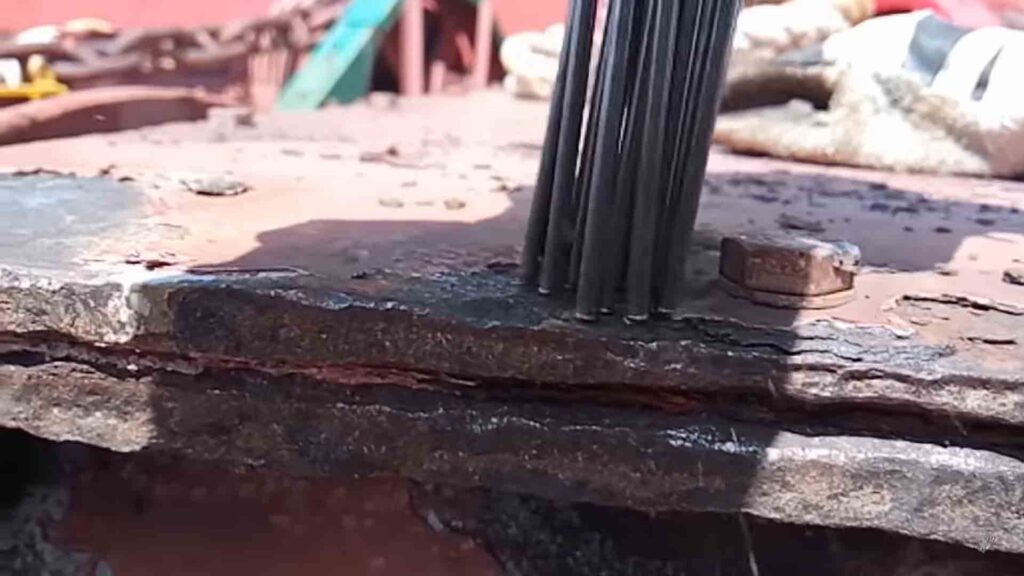
With this, we are now able to chip the corrosion on deck but only when the tank is empty and inerted.
Remember that the deck is the division between the ambient surroundings and the cargo inside the tank.
If there are cargoes inside the tank, chipping must be avoided. Even this kind of maintenance inside the ballast tank is not allowed in this context since they are adjacent.
One method the deck crew makes is to chip as much as possible during a ballast voyage and paint it up to the second primer.
When the ship is in loaded condition, you can go full ahead with the paint job. At the same time, you can transfer to other areas away from the deck if you want to continue chipping.
How to chip on board
For some strange and mysterious reason, chipping and painting can be a satisfying job.
The first thing to do when chipping is to check your equipment for damage and functionality.
Since most chipping tools on tanker vessels are pneumatic type, check also the couplings, connections, and air hose for leaks.
If you find defects in any of these parts, you must repair them or replace them with better ones.
And don’t forget to wear your personal protective equipment.
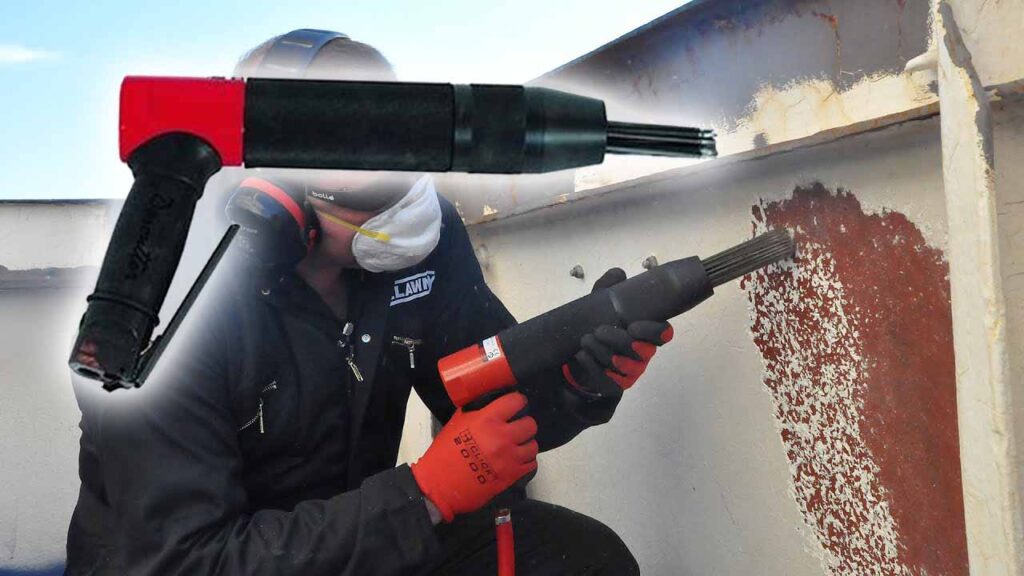
Needle gun scalers are one of the most commonly used chipping tools where the vibrating needles chip away the rust.
Next is to proceed to the area of interest. Bring your tools and prepare them accordingly.
A needle gun scaler is like a gun but with blunt needles. As soon as you pull the trigger, the needles vibrate and oscillate and that rapid motion is what removes the corrosion while creating sparks in the process.
How to paint
Now that the metal is free from rust, it’s time to protect them from the weather elements.
To do this, a series of paints are applied to prevent them from rusting again or delaying the corroding process.
The paint acts as a barrier between the metal and the surroundings.
You can apply up to four coats depending on the company policy or the paint brand’s specifications.
The first coating uses primer paints and is usually a double component. It is very sturdy since it is the bare metal’s first protection against corrosion.
You can apply up to two or three primer paints.
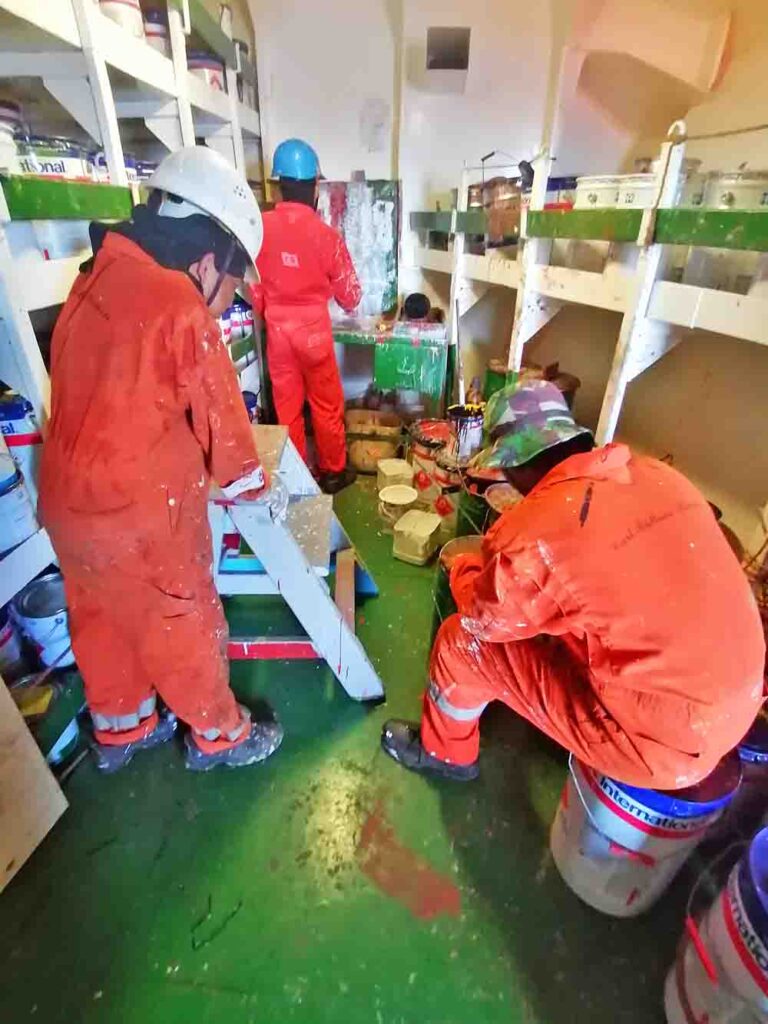
The last coating is called the top coat. Top coats can be a double component too. They are resistant to heat and saltwater penetration in addition to their cosmetics properties.
Unlike chipping, you can paint whether the ship is gas-free, inerted, ballasted, or loaded since this job doesn’t involve power tools.
May the winds be in your favor.

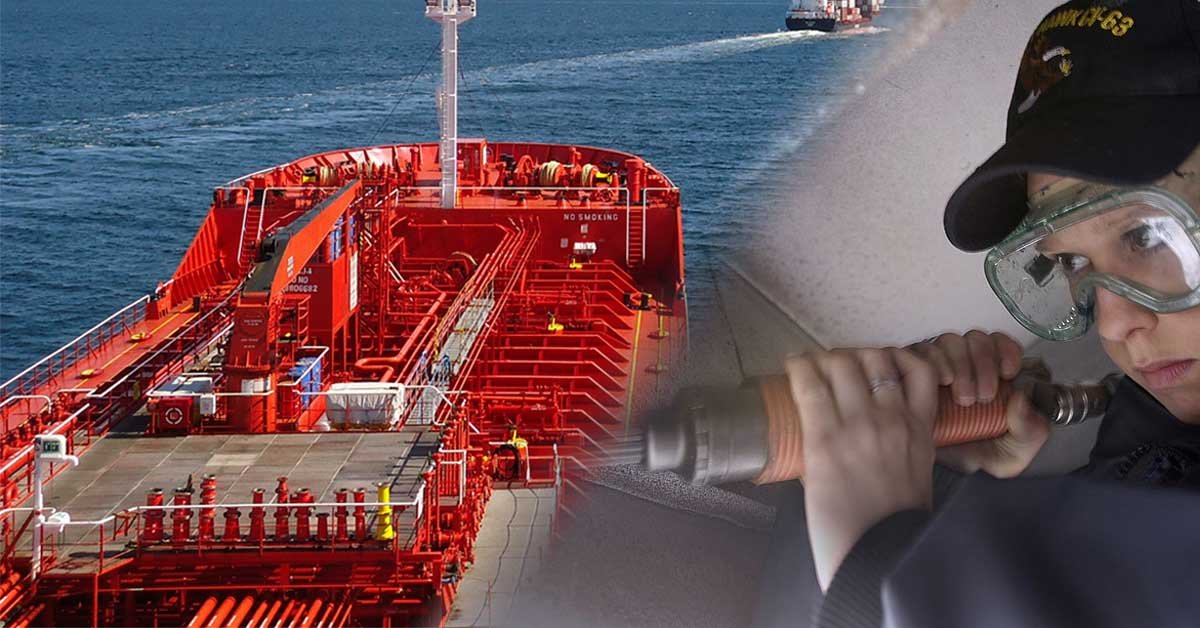
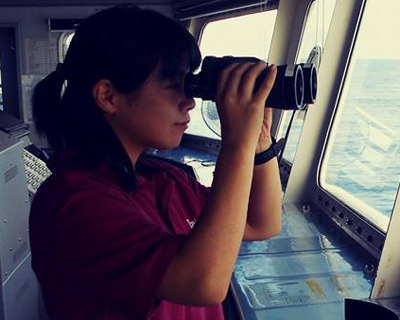
0 Comments